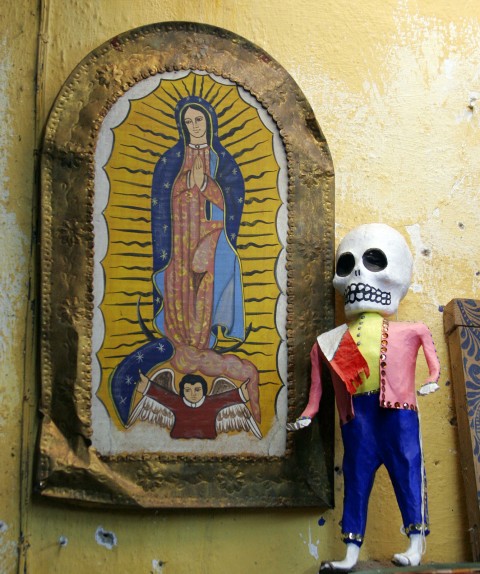Catholic, Aztec Mexico
In the 500 years since Catholicism came to Mexico, it has profoundly shaped and been shaped by the indigenous culture.

One of the most significant and troubling anniversaries in the history of Christianity is approaching. February 2019 marks the quincentennial of the arrival of Hernán Cortés in the land of Mexico, an event that led to savage warfare and brutal exploitation but also ultimately to a historic global expansion of the Christian faith. Both conquest and conversion have left indelible marks.
That religious epic involves the best and worst elements of the Christian story. In the beginning, mass conversions were enforced, in part as a political justification for plunder, enslavement, and the founding of empire. Yet over time native subjects absorbed and appropriated the faith, reinterpreting it on their own terms and making it an indispensable part of Mexican culture. Today Mexico is one of the world’s most populous Christian nations, with over 100 million Catholics and perhaps 10 million Protestants of various shades. After long conflicts and multiple disasters, the country’s Catholic Church remains a vast and powerful institution.
The story of that church is one of radical breaks with the past and startling continuities. One eloquent symbol is the mighty cathedral of Mexico City itself, which stands in the main square, the Zócalo, which was also the political and religious center of ancient Aztec Tenochtitlán. That cathedral is adjacent to the old Templo Mayor, the pivot of Aztec ritual life, and it was constructed from the stones of the dismantled temple. Such a physical continuity appears in many Mexican cities and towns. Most of the great religious sites of Catholic Mexico are those of the Aztec world, and their role as centers of pilgrimage and ritual celebration reproduces that of pre-Christian times.




